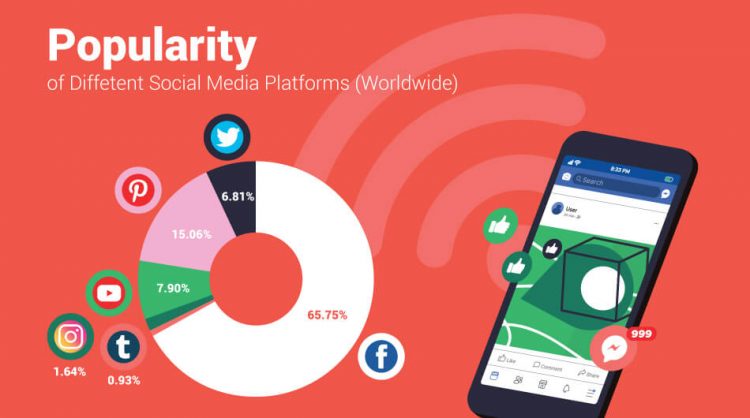In today’s reality, as a result of the COVID-19 pandemic and its restrictions, we need new approaches to almost everything in our lives. The pandemic has affected the overall educational system, and the e-learning industry in particular. In these difficult times we need education that is accessible, effective, and flexible. At the same time, we have to be sure that the quality of learning is as expected and that we are ready to face new challenges.
E-learning as a fast growing industry
- The e-learning market is expected to exceed $375 billion by 2026.
- By 2023, the worldwide LMS market will be valued at $22.4 billion.
Almost 4.66 billion people were active internet users as of October 2020, encompassing 59 percent of the global population. Therefore, 61.4% of the world’s population uses the internet. This rate will continue in 2021, as will the need to have access to e-learning. Therefore, 61.4% of the world’s population uses the internet. This rate will continue in 2021, as will the need to have access to e-learning.
The trends are clear. E-learning will play an important role in educational systems worldwide and become a permanet fixture in both formal and informal education. In addition, we also expect the rise of e-learning in the workplace related to lifelong learning, industry 4.0, and digitalization.
Here are some questions that we need to ask:
- Is the e-learning industry going to grow at a rapid pace at the expense of quality?
- Are we ready to participate in this growing industry?
- How can higher learner engagement be achieved?
- How can we be effective teachers in online training?
What are the trends in online teaching in 2021 that will help answer the questions above?
Trend 1: Virtual reality/ Augmented reality
Using virtual reality in the classroom can help a teacher take their students on a virtual adventure. For example, U.S. Military Academy cadets use virtual reality (VR) to gain a deeper and more useful understanding of how commanders throughout history have fought battles. Instructors/tutors accompany them across the field with the use of VR software. This application was used for the first time in 2017 in the classes of European History and Western Civilization. Virtual tours helped students learn about the Gallic Wars and the battles of Caesar. In addition to textbooks and topographic maps, the application allows the cadets to assess the terrain and the human factor involved in the events. This approach can help teachers enhance student participation in the learning process.

Trend 2: MOOC`s vs SPOC`s
What are MOOC`s (Massive Open Online Courses)? In general, these are online courses that are available to everyone with a computer, mobile device, and connection to internet. These courses enable the participation of many students at once. Although this kind of online learning can provide many advantages, there are also some disadvantages that can`t be overlooked. For example they don’t allow for personalized attention to every participant and the completion rate is very low.
The limitations of MOOC`s can be avoided by creating more custom-sized courses, as well as by making them more flexible, available, and easier to meet the learning outcomes. In this kind of online learning, real-time interaction is available and the participants can communicate in forums, virtual classrooms, and reflection forums. The number of groups is low and an instructor usually monitors the learning processes and moderates the discussions.
These courses are also known as SPOC`s or Small Private Online Courses. They are a modification of MOOC`s that allow the participants to be part of online learning. This is a response to the growing demand of student-centered learning experiences.
Trend 3: Teaching in online tutor-led training
The role of tutors in the online learning environment is to guide the course participants through the entire e-learning experience, to take them through the course step by step, and to encourage them. A successful and effective online tutor must be able to combine different roles. Let`s list and explore some of them:
- Social role
This involves, encouraging, acknowledging, and responding to learner comments in a discussion forum; helping the participants to feel part of a learning community; and trying to establish a positive atmosphere for learning.
- Organizational role
The tutor has to be familiar with the course structure, the requirements, and the time schedule. All the steps should be absolutely clear for them. This also includes creating teaching and learning objectives, class assignments, or discussion topics, as well as planning the timing of announcements carefully so that students are not overloaded with information at different points in the course.
- Pedagogical/intellectual role
This involves focusing discussions on specific issues of relevance to students and/or the course’s learning goals. Once a discussion has begun, a tutor may need to monitor, prompt, and build on the conversation. This discussion could be an online discussion in real time using videoconferencing in a virtual classroom or it could be a text chat on discussion boards and forums in an asynchronous learning environment. This also includes recognizing misconceptions or misunderstandings on the part of students and clarifying where confusion exists.
Trend 4: Online teaching and 2.0 technologies
On average, internet users spend over 140 minutes per day on social media, with Facebook remaining the most used social media platform worldwide.
Web 2.0 technologies offer many opportunities for classroom transformation and facilitates social learning. These are interactive platforms with tools that stimulate the participation of learners and their involvement in the learning process, as well as allow them to create learning content, which can be done through social communication.

Trend 5: Interactive course design
The world around us is becoming more and more colorful and dynamic, and information and knowledge is available through many channels. The design of online courses has to be interactive in order to be competitive in this world. Videos and real-time communication are essential for this reason. No matter what kind of Learning Management System (LMS) is used, it is recommended that every course include interactive activities such as:
- information handling (for example, internet searches and information analysis)
- communication (forums for plenary discussion, pair dialogue, etc.)
- productivity (producing material, document, etc.)
- experiential exercises (for practicing skills in a particular context – interviews, etc.).
Trend 6: Support tools for interactive online teaching
When creating an interactive course we need to think of tools that enable real-time communication between the teachers and students, as well as between the students themselves. The virtual classroom can facilitate group work, video conferencing can provide external experts to the course participants, and slide shows and live video can help create a more engaging learning experience.

Trend 7: Mobile learning
Mobile learning (or m-learning) is defined as “the use of mobile or wireless devices for the purpose of learning while on the move” (Park, 2011, p. 79, cited in Bower, 2017). In 2020, users spent an estimated 170 minutes per day online (Internet Usage Worldwide – Statistics&Facts – www.statista.com), primarily via smartphone. The need to learn through virtual media is growing. Devices like smartphones, tablets, and digital notebooks that are used for m-learning are more accessible. They allow learners to access education anywhere, anytime. Online teaching can be easy and flexible in this context.
If we want to create high-quality online courses for the e-learning environment, we have to ensure that the student can be able to look for answers in the learning process, ask questions, find solutions, create resources, and that all of this can be done together with their classmates. In this way, we will be able to meet the high-quality learning outcomes that we are shooting for.
If we want to effectively participate in the growing e-learning industry, we have to use the facilities of the e-learning environment. They allow us to create a classroom that is “open,” meaning that anyone can enter and leave, while creating an atmosphere of collaboration and interaction. Learners should be able to create and share learning content.
In order to achieve higher learner engagement, online teaching in 2021 should support e-learning that is flexible available, easy to access, interactive, customized, and student centered.
Effective online teachers need to consider all of the above-mentioned considerations in regards to their ability to use these new technologies, tools, and facilities, as well as to incorporate them in the learning process.
